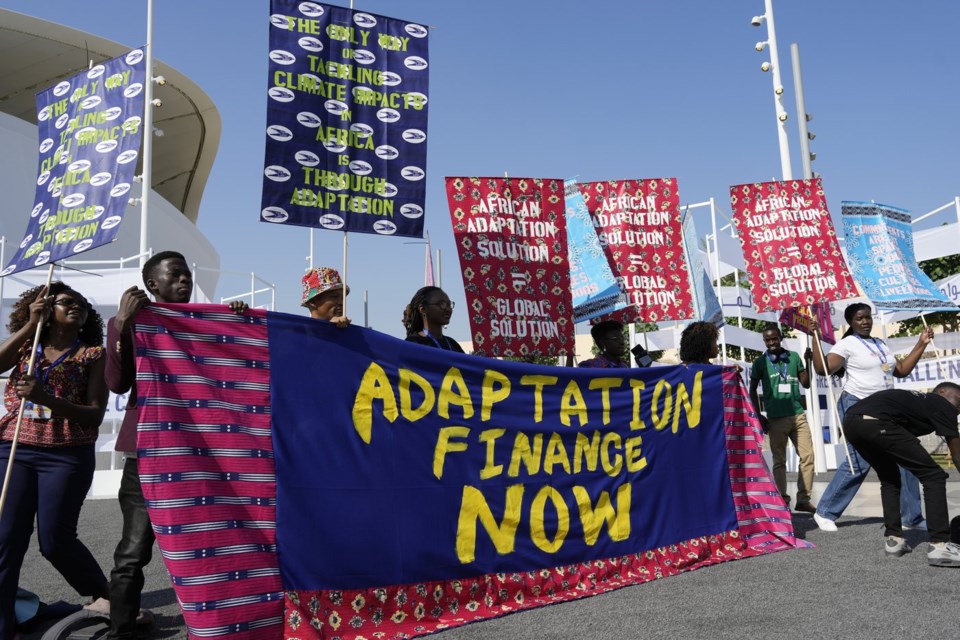TORONTO — Work on climate change has largely focused on preventing it from getting worse, but as a new RBC report points out, businesses are also starting to think more about potential spending on adaptation and preparation as the costs of disasters pile up.
The report says that extreme weather and natural disaster costs already totalled US$368 billion last year, 14 per cent above the long-term average since 2000, and that this year could match or exceed the total.
The trend is expected to get worse, because as the report notes there's expected to be a 2.7 degree rise in average temperatures by 2100 based on current global policies and actions, while an optimistic scenario pegs the rise at 1.9 degrees.
The costs stemming from rising temperatures are leading to more attention in boardrooms, with the report noting mentions of climate change on the rise in both U.S. and Asia.
"We are also seeing discussions of extreme weather impacts during earnings calls hit new highs this year," said Sara Mahaffy, RBC's head of global sustainability strategy research, in the report.
Mentions of physical climate change risk on Canadian earnings calls did see a lumpy climb from late 2020 to a peak mid last year, but the report showed mentions had fallen sharply in recent months.
Talk has been highest in industries like utilities, insurance and industrial services that could be most affected by climate change, said Mahaffy.
"Companies have not only been citing higher financial impacts (risks), but also increased tailwinds for their products and services that are helping customers prepare and respond to extreme weather events and natural disasters (opportunities)."
The report says that so far it's still a challenge to finance bigger, longer-term adaptation efforts, which can include measures like burying power lines and building floodways, but that a study out this year found that every $1 invested in adaptation and resilience generates more than $10 in benefits over a decade.
Public funding has so far supplied about two-thirds of spending on adaptation efforts, the report notes, with funding especially falling short in developing countries. While annual adaptation needs for lower-income countries total US$387 billion a year, international public finance flows have totalled only US$28 billion a year.
Part of the importance in investing in developing countries is that there's an opportunity to build for the future there now, said Mahaffy.
"According to the World Bank, 70 per cent of infrastructure that will exist in developing countries by 2050 has yet to be built, presenting a huge opportunity to integrate adaptative solutions early on."
Besides the need for ramped-up spending, companies are also figuring other ways to adapt, such as insurers issuing sustainability-linked coverage that rewards and incentivizes company resilience measures, and the rise of ESG debt that includes adaptation clauses.
Insurers are also adapting by issuing more catastrophe bonds, which transfer risk from the insurers to investors who buy into the bonds. The market for the category has grown seven per cent a year since 2015 and is on track to exceed US$50 billion this year, the report notes.
There are many companies in the U.S. that the RBC report notes could stand to benefit from shifting trends, but it also highlighted a few Canadian ones.
Fertilizer giant Nutrien could be well placed through its products that help farmers manage crops, while satellite company MDA Space could see higher demand for weather forecasting and climate modelling. Canadian companies in the waste management sector could also see higher interest because of disaster response needs, while engineering and construction firms stand to gain from the need to build for the future.
This report by The Canadian Press was first published June 23, 2025.
Companies in this story: (TSX:NTR; TSX:MDA; TSX:RY)
Ian Bickis, The Canadian Press




